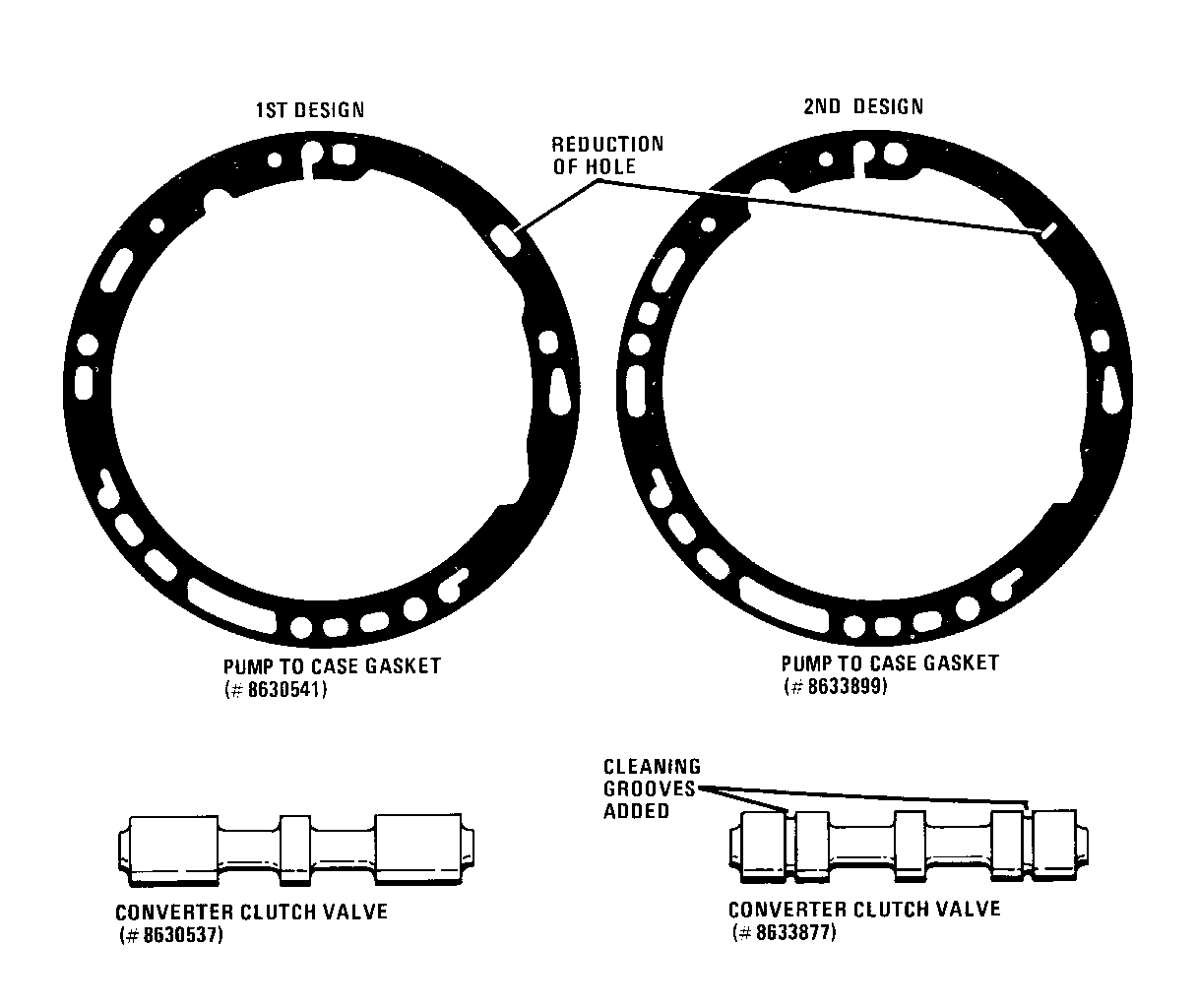TRANS OIL EXHAUSTING FROM VENT 200 TRANSMISSION

TRANSMISSION OIL EXHAUSTING FROM VENT - THM 200C
1981 "C" cars equipped with a THM 200C transmission may experience transmission oil exhausting from the vent during transmission operation. This condition can be caused by one or more of the items covered in this bulletin. When servicing the transmission for this condition, inspect the transmission oil level. If the fluid level is not over the full mark, remove the transmission and proceed as follows:
1. Remove the transmission pump and inspect the pump body and cover for nicks and burrs on their mating surfaces. Also, check the pump cover for nicks or burrs on the surface that mates to the transmission case. If nicks or burrs are evident, replace the appropriate part(s).
2. Install the pump cover to body and torque the attaching bolts to 24 N.m (18 ft. lbs.).
3. Inspect clutch converter valve (refer to figure on reverse side). If first design valve is present, install the new design converter clutch valve (P/N 8633877) into the pump cover.
4. Inspect the direct clutch housing bushings for a worn condition. If worn, replace the bushing(s).
Inspect the transmission case to pump assembly surface for nicks and burrs. If severe nicks or burrs are evident, replace the transmission case.
6. Install second design pump to transmission case gasket (PIN 8633899) onto the case (refer to figure).
7. Torque the pump to transmission case bolts to 24 N.m (18 ft. lbs.).
8. Install the transmission into the vehicle (refer to the 1981 Cadillac Service Information Manual, page 7-22).
For warranty purposes, use the existing 1981 LTG operation in the 200 transmission section for the component which was replaced:
Pump and Gasket - K7120 at 2.5 Hours Clutch Converter Valve - K7120 at 2.6 Hours Direct Clutch Housing Bushing - K7200 at 3.3 Hours Transmission Case - K7800 at 4.5 Hours

General Motors bulletins are intended for use by professional technicians, not a "do-it-yourselfer". They are written to inform those technicians of conditions that may occur on some vehicles, or to provide information that could assist in the proper service of a vehicle. Properly trained technicians have the equipment, tools, safety instructions and know-how to do a job properly and safely. If a condition is described, do not assume that the bulletin applies to your vehicle, or that your vehicle will have that condition. See a General Motors dealer servicing your brand of General Motors vehicle for information on whether your vehicle may benefit from the information.
